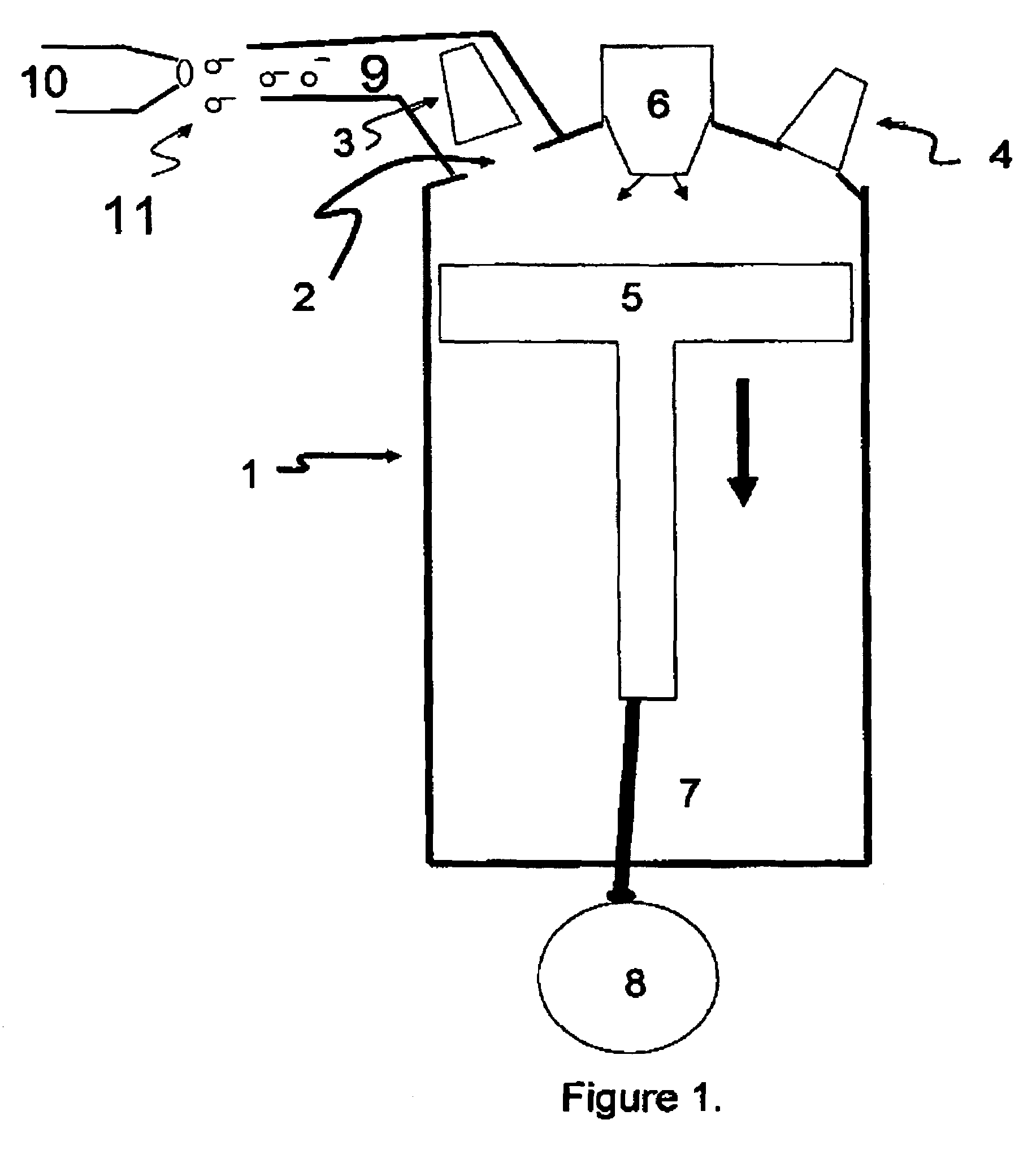Charged water fumigation for combustion systems
- Summary
- Abstract
- Description
- Claims
- Application Information
AI Technical Summary
Benefits of technology
Problems solved by technology
Method used
Image
Examples
experiment 1
October 2004
[0076]The 1977 Mercedes Benz 240D was mounted on a chassis dynamometer and tied down with nylon straps. The car engine is not grounded out as in the experiments conducted in 1997. The cruise control was not operational, so the fuel linkage was clamped at a given setting. Diesel fuel delivery was adjusted by this linkage to add more or less fuel to each injection event, so clamping the linkage insures that the same amount of fuel was delivered for each cylinder event.
[0077]The car was running at 38 miles per hour with a dynamometer load of 15.6 Horsepower. The fueling rate was determined by weighing the fuel in a Plastic reservoir every 5.0 minutes. The digital scale had a range of 10 Kilograms and an accuracy of 1 gram. The fueling rate under these operating conditions was 405 grams ±5 grams every 5.0 minutes. The variation in fueling rate, speed and load was less than 0.5% for a 1.5 hour observation period.
[0078]With the application of CWF on the chassis dynamometer at ...
experiment 2
[0081]A second experiment was performed with the fueling rate pinned at the same rate. As a result the engine ran at the same speed and load as in experiment 1 (38 mph and a load of 15.5 horsepower on the chassis dynamometer). The same water spray was applied to the air intake, but the charging circuit was removed and no electrons were added to the spray. The results were profoundly different from experiment 1.
[0082]The NOx levels decreased by 20%, but the engine speed and load remained constant at 38 mph and 15.5 hp loading. This second experiment shows that the electrons are directly responsible for the changes in combustion rate. Both experiments used the same amount of water fumigation, but the first one with electrons added caused a large increase in speed and torque.
experiment 3
[0083]The cruise control was operational and the car was operated at 38 mph and a load of 13.5 horsepower. The charged spray was introduced through a 4 foot long section of PVC pipe that had a 90 degree bend that was mounted directly over the air intake.
[0084]The efficiency increased by about 3% and the NOx decreased by about 22%. This result suggested that too little charged water was getting into the engine, so a smaller diameter PVC delivery tube was employed. The smaller diameter feed tube allowed for more of the charged water to enter the air intake manifold, but the exact quantity was not measured.
PUM
 Login to View More
Login to View More Abstract
Description
Claims
Application Information
 Login to View More
Login to View More - R&D
- Intellectual Property
- Life Sciences
- Materials
- Tech Scout
- Unparalleled Data Quality
- Higher Quality Content
- 60% Fewer Hallucinations
Browse by: Latest US Patents, China's latest patents, Technical Efficacy Thesaurus, Application Domain, Technology Topic, Popular Technical Reports.
© 2025 PatSnap. All rights reserved.Legal|Privacy policy|Modern Slavery Act Transparency Statement|Sitemap|About US| Contact US: help@patsnap.com


